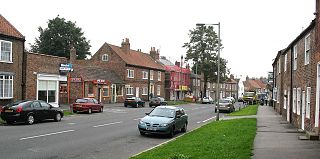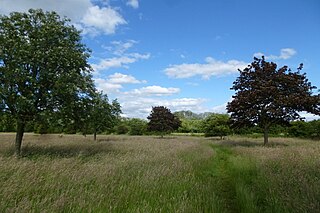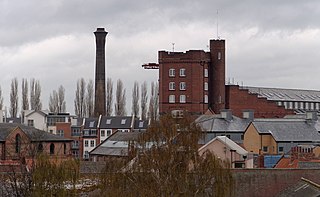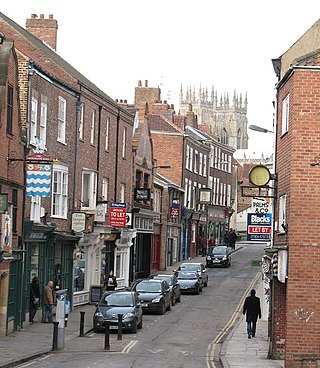Centre
Squares

York's squares are:
- St Sampson's Square, the old market square at the head of Parliament Street;
- St Helen's Square, anchored by York Mansion House and St Helen's Church on opposing ends of the square, it also links to York Guildhall which is behind the mansion house overlooking the River Ouse;
- King's Square, anchored by York's Chocolate Story;
- Shambles Market Square, developed in the 1950s, the current market square;
- Queen Elizabeth Square, a planned square at Duncombe Place next to the Minster, name in honour of the late Queen Elizabeth II; [1]
- Coppergate Shopping Centre square, developed in the 1980s and anchored by the Jorvik Viking Centre and St Mary's Church museums.
- Exhibition Square, it is anchored by the York Art Gallery and Bootham Bar, it is surrounded by defensive walls from the city wall's differing alignments through history. [2]
Middle

Parliament Street is wide, pedestrianised, and lined with large London planes. It is the city centre's main street, central to the network of gates, snickelways and squares. It was created in the early Victorian Era merging two marketplaces, St Sampson's Square and Pavement. [3]
York Castle is to the north of a peninsula formed by the Foss flowing into the Ouse. It is an area with multiple parts such as the Eye of York green, Clifford's Tower, Tower Gardens, the crown court and York Castle Museum.
North West

North west of the centre is the walled Museum Gardens, the Hospitum, St Olave's Church and ruins of St Mary's Abbey. North west of the gardens is Bootham. The city's medical facilities are concentrated at Bootham with Bootham Park Hospital and York Hospital. The latter hospital borders Bootham Stray and Bootham itself borders Clifton.
North east

North-east from Foss Bridge to Bootham Bar is a quieter area of the city. On the Bootham Bar end is Petergate with the green space of Dean's Park, York Minster and the Treasurer's House. North east of this, outside the walls, is York St John University's Campus.
Halfway down is Goodramgate with shops on the gate and on Monkgate, other streets in the area are for housing. The walls end at Layerthorpe, King's Fishpool formerly existed here, this meant that walls in the area were not needed. [4]
Near the bridge is Fossgate. Apart from Fossgate, the area is high density housing and offices, including the Government's DEFRA. The DIG centre is based here.
South east

The walled centre's area east of the River Foss is centred upon Piccadilly, Walmgate; after the walls Fishergate and Lawrence Street. Walmgate and Lawrence Street have small shops on both sides creating a main shopping thoroughfare through the area while Piccadilly has hotels.
From just north of Walmgate bar, the area outside the walls is light industrial with a number of supermarkets. From Red Tower to the Layerthorpe, along the Foss, the city walls have been removed. Near Fishergate Bar is York Barbican.
The centre reaches from Walmgate Stray to Monk Stray; neighbouring Fulford, Heslington, Osbaldwick and Heworth.
South west

Bishophill is the walled centre's area west of the River Ouse. The area is residential to the south, Micklegate is the main thoroughfare for trade and offices are found along the Ouse (off Skeldergate) and north of Micklegate (off Toft Green and Tanner Row). [5]
North and east of Bishophill is Bishops Fields. The north of Bishophill and Bishops Fields are dominated by the railway; multiple offices, York station and the National Railway Museum.
Micklegate becomes Blossom Street which goes towards the Micklegate Stray, which includes the Knavesmire. This part of the centre neighbours Holgate, Dringhouses, South Bank and Middlethorpe.












